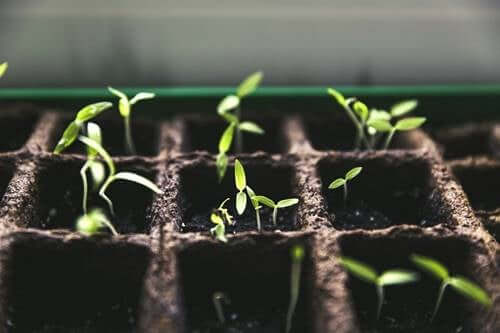That’s a common image today. Many people began to dedicate themselves to an orchard at home, now live small terraces on terraces, balconies and windows where shy seedlings grow, plants that, with our care, interest and patience, will pay off in a few months.
For many, it’s just a passing fad. Social networks are full of images of anonymous and famous characters who have started to show off their small craft crops, these photos gain thousands of likes, showing us how it is possible to create an ecological garden with parterres, compensating for the lack of space with creativity and care.
- However.
- For experts.
- It is not a matter of fashion.
- Nor an attempt to dedicate ourselves to something creative during the days when we have nothing to do.
- In reality this exercise or love is also one of our reactions when returning to primary school.
- To things.
- To contact with the earth.
- To something traditionally basic to humans.
It’s not that we’re afraid of running out of food at all times, nor is it a desperate attempt to be self-sufficient by growing garlic and tomatoes on the porch if scarcity occurs, it’s a return to nature to regain calm. connect with something as primordial as it is comforting.
The poet Rabindranath Tagore said that people are used to mistreating the land and that she, in response, offers us flowers, is true.
What draws our attention is that many people have the interest of returning to gardening, of having contact with the creative soil that feeds us, protects us and, after all, gives us life.
So, having time and maintaining a slower, more intimate rhythm, often focused on introspection, made us feel more curious about the earth and watch the seedlings, seeds, flowers and fruits grow.
Growing an orchard at home is not just a fad on days of boredom, many get unusual benefits from this practice.
Sometimes we need space to feel good, to think, to find calm in a world that suffers, that changes rapidly.
We survive as much as we can, but we also discover things every day, many believe, others rest simply to heal, to calm anxiety, and others have chosen to devote hours to domestic cultivation.
It is interesting to know that gardening is an exercise that promotes our mental health.
Jennifer Atkinson, a professor at the University of Washington, explains in her research paper Nature, Fantasy and Everyday Practice that gardening helps manage stress, allows us to think about alternatives to problems, and also promotes connection with ourselves.
We mentioned it at the beginning: growing an orchard at home is not a behavior that we generate in response to fear, we are not afraid to run out of food.
However, it should be noted that in times of crisis and difficulty, this was a common practice and we may have had this little instinctive vestige.
Now, whether someone does it out of necessity or not, there’s something undeniable: planting seeds, watching them grow and harvesting a fruit or vegetable over time is one of the most rewarding things for humans, it’s always been like this. Contact with the earth returns us to the most primitive and gives us much pleasure.
There is a sense of hope when you see the plants grow, how the fruit appears and finally hangs from the plant waiting to be harvested.
Home gardening is a brain collapse. Today technology is our ally, of course, thanks to it we are in contact with friends, family and colleagues.
The screens of our mobile phones and computers occupy our hours and create bridges with which they are far away, however, there is something that often happens to most of us: when we turn off the cell phone or finish the video call, we find ourselves in a vacuum cleaner.
This inexplicable void can be filled with gardening and these small terraces or balconies, cultivate is to create, come into contact with the land, learn to care for and be patient.
Do the days go by faster as plants grow and their leaves, their berries bloom?We have lost nothing in trying to delve into this old practice that often goes beyond supply and food.

